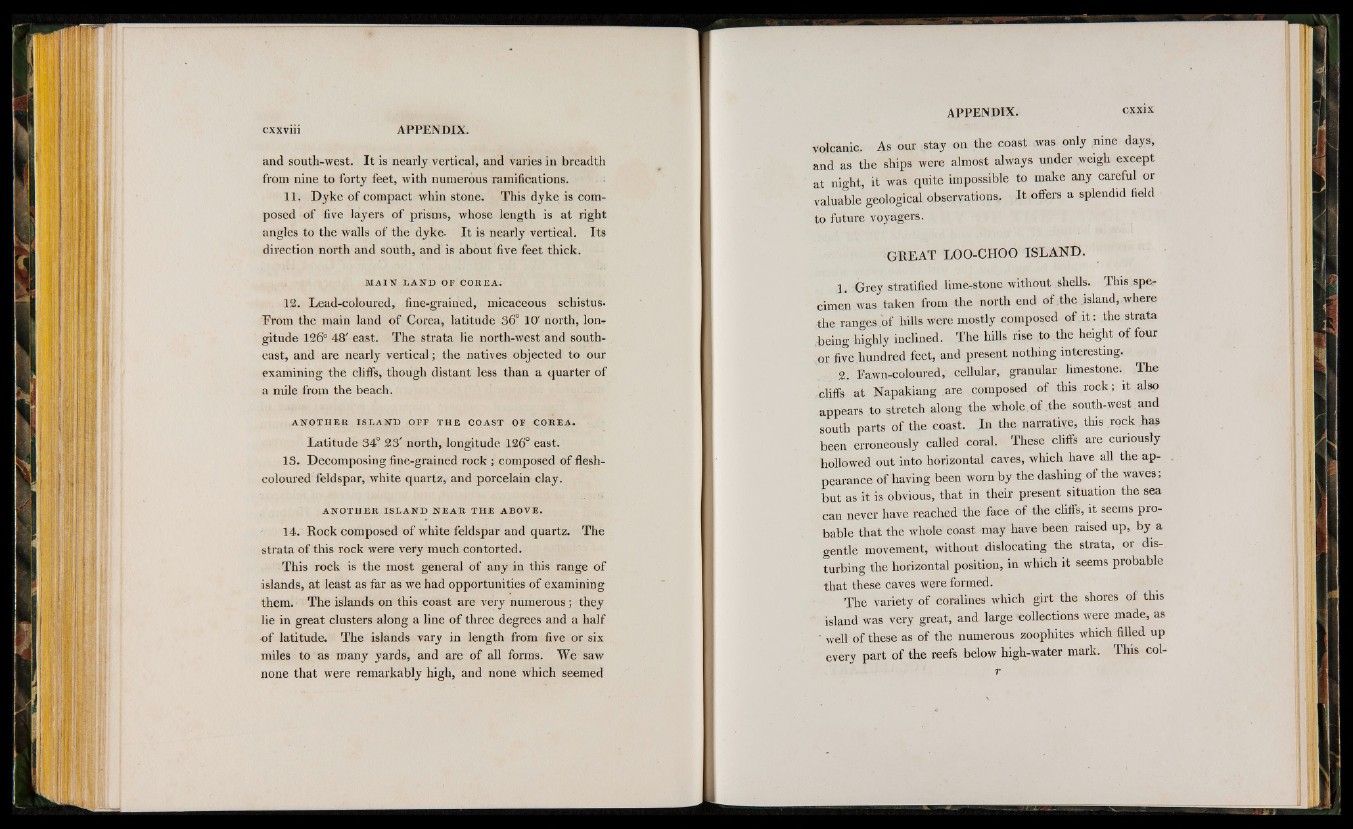
and south-west. I t is nearly vertical, and varies in breadth
from nine to forty feet, with numerous ramifications.
11. Dyke of compact whin stone. This dyke is composed
of five layers of prisms, whose length is a t right
angles to the walls of the dyke. I t is nearly vertical. Its
direction north and south, and is about five feet thick.
M A IN LA N D OF COREA.
12. Lead-coloured, fine-grained, micaceous schistus.
From the main land of Corea, latitude 36° 10' north, Ion-
gitude 126° 48' east. The strata lie north-west and southeast,
and are nearly vertical; the natives objected to our
examining the cliffs, though distant less than a quarter of
a mile from the beach.
A N O TH E R IS LA N D OFF TH E COAST OF COREA.
Latitude 34° 23' north, longitude 126° east.
13. Decomposing fine-grained rock ; composed of flesh-
coloured feldspar, white quartz, and porcelain clay.
A N O TH E R IS LA N D N E A R TH E ABOVE.
14. Rock composed of white feldspar and quartz. The
strata of this rock were very much contorted.
This rock is the most general of any in this range of
islands, a t least as far as we had opportunities of examining
them. The islands on this coast are very numerous; they
lie in great clusters along a line of three degrees and a half
of latitude. The islands vary in length from five or six
miles to as many yards, and are of all forms. We saw
none that were remarkably high, and none which seemed
volcanic.. As our stay on the coast was only nine days,
and as the ships were almost always under weigh except
at night, it was quite impossible to make any careful or
valuable geological observations,. I t offers a splendid field
to future voyagers.
GREAT LOO-CHOO ISLAND.
1. Grey stratified lime-stone without shells. This spec
i m e n was taken from the north end of the island, where
the ranges .of hills were mostly composed of it : the strata
.being highly inclined. The hills rise to the height of four
or f iv e hundred feet, and present nothing interesting.
2. Fawn-coloured, cellular, granular limestone. The
cliffs a t Napakiang are composed of this rock; it also
appears to stretch along the whole.of the south-west.and
south parts of the coast. In the narrative, this rock has
been erroneously called coral. These cliffs are curiously
hollowed out into horizontal caves, which have all the appearance
of having been worn by the dashing of the waves;
but as it is obvious, that in their present situation the sea
can never have reached the face of the cliffs, it seems probable
that the whole coast may have been raised up, by a
gentle movement, without dislocating the strata, or disturbing
the horizontal position, in which it seems probable
tha t these caves were formed.
The variety of coralines which girt the shores of this
island was very great, and large -collections were made, as
' well of these as of the numerous zoophites which filled up
every part of the reefs below high-water mark. This col